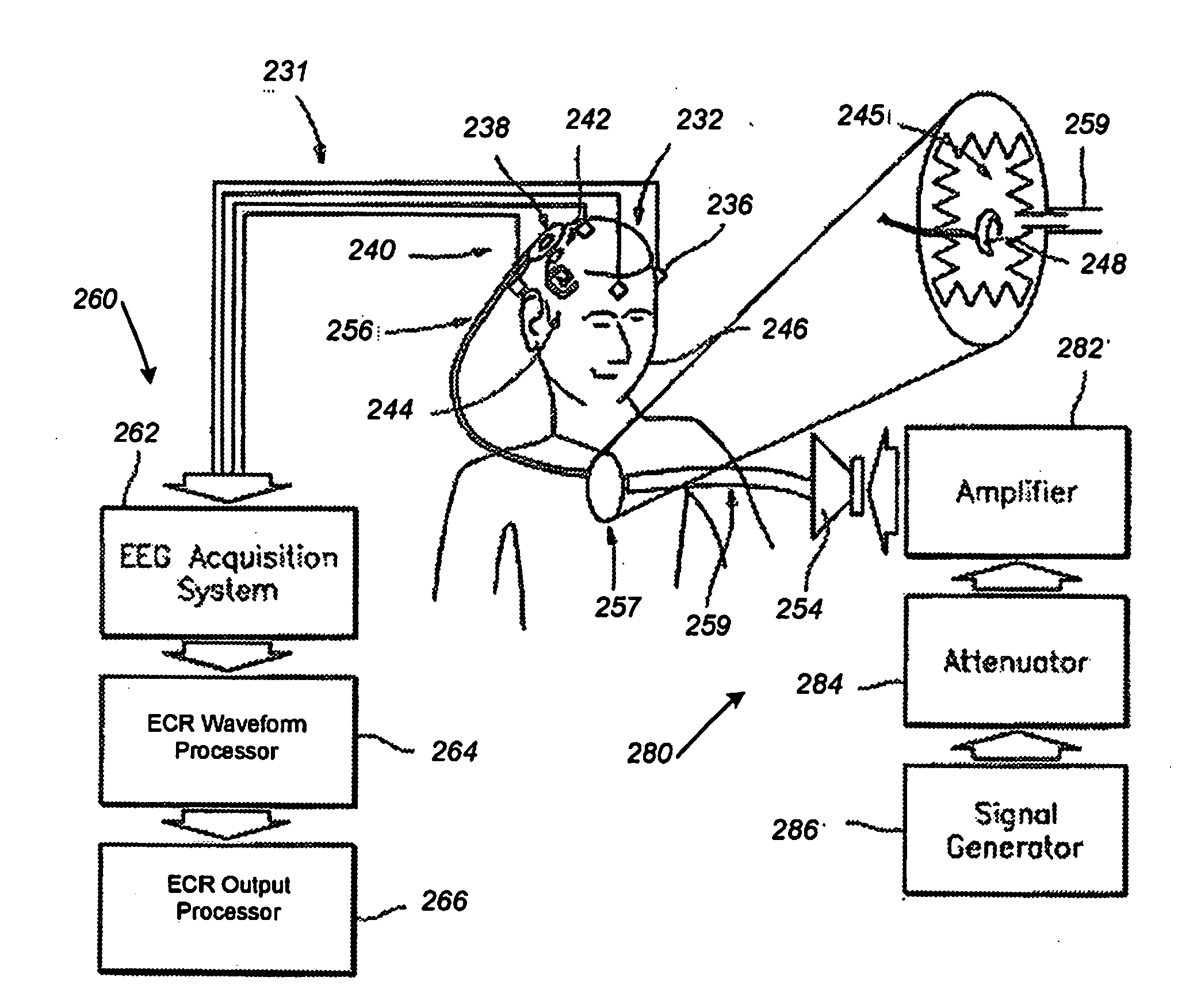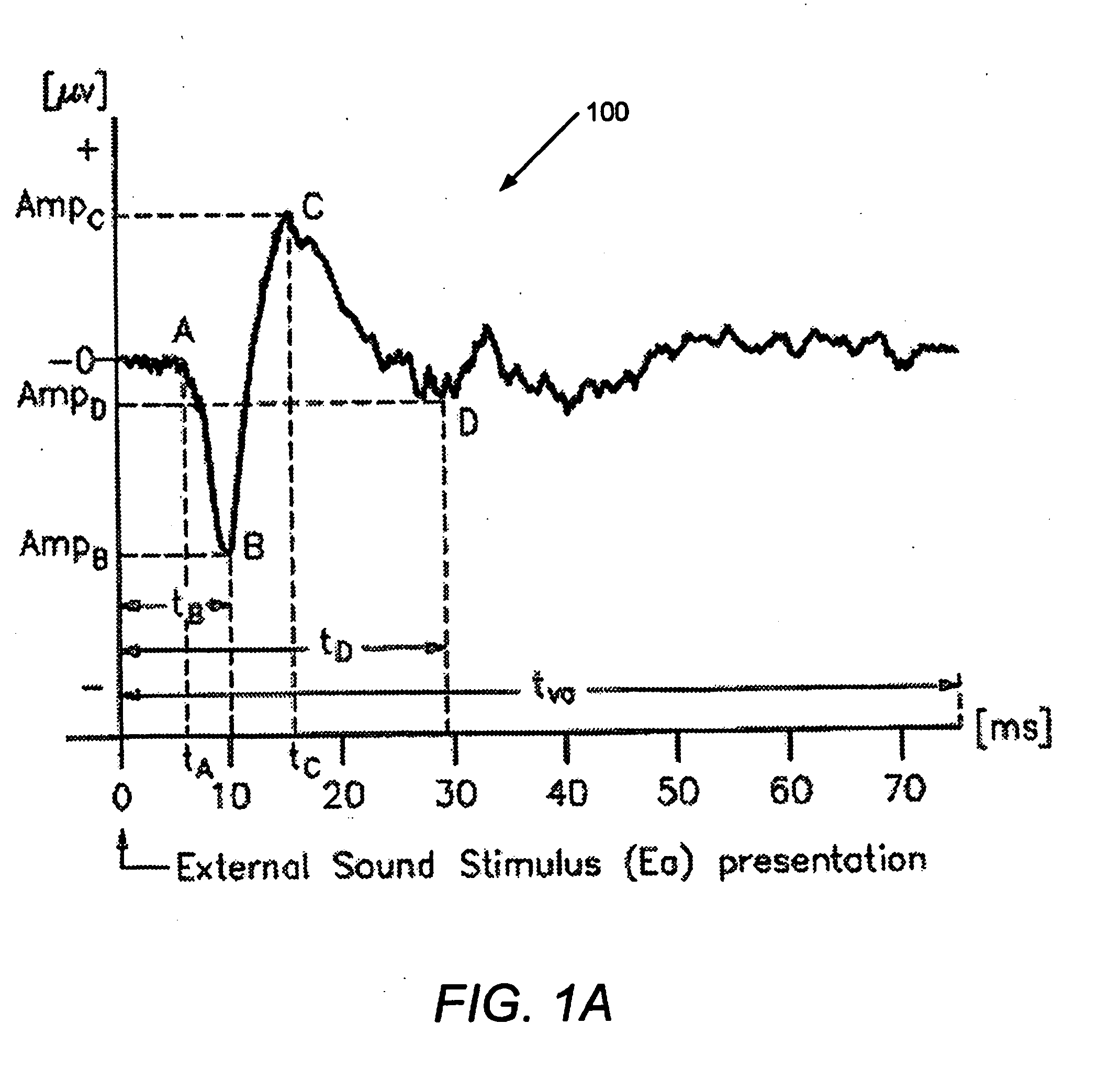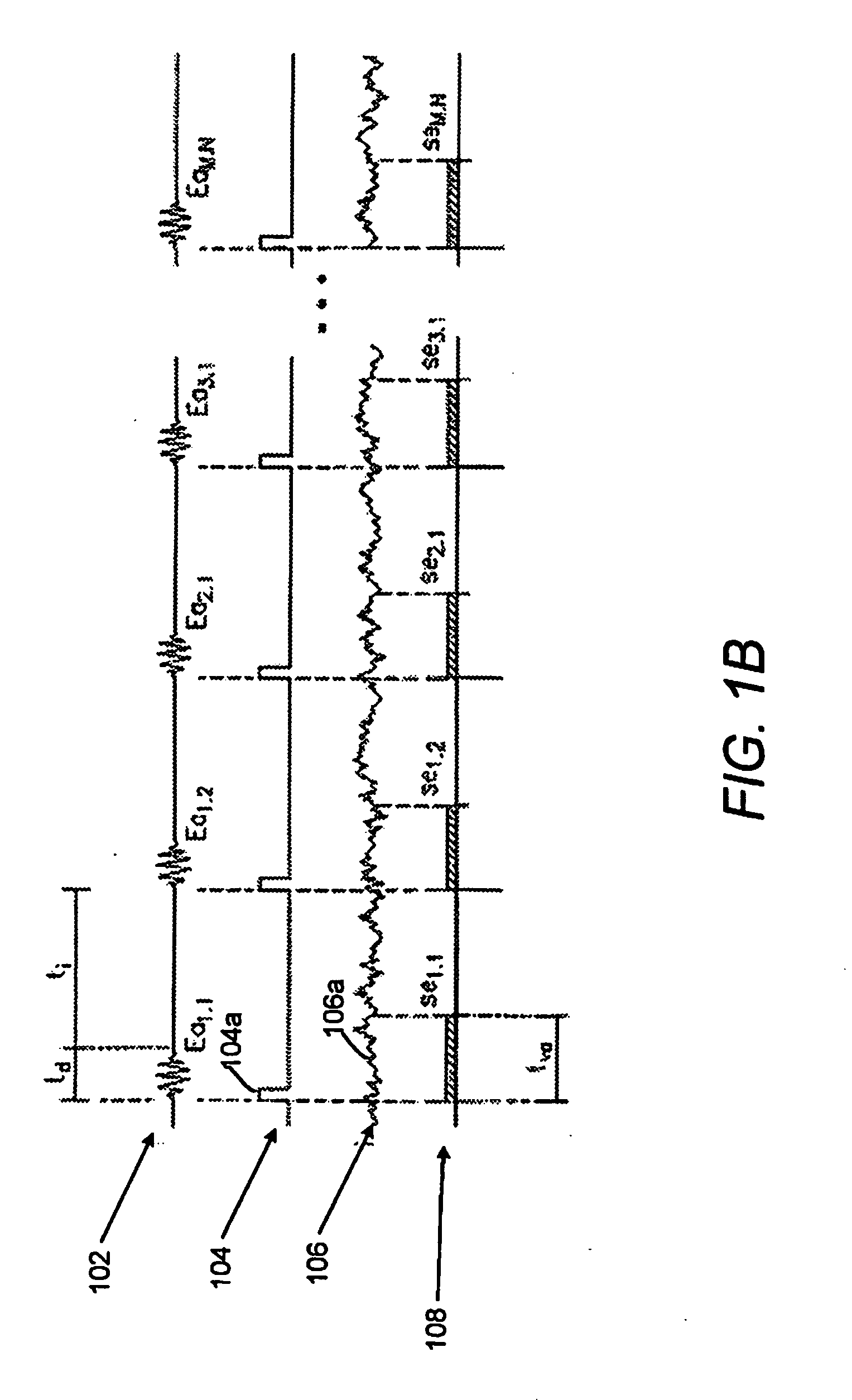Systems and Methods for Detecting and Using an Electrical Cochlear Response ("ECR") in Analyzing Operation of a Cochlear Stimulation System
- Summary
- Abstract
- Description
- Claims
- Application Information
AI Technical Summary
Benefits of technology
Problems solved by technology
Method used
Image
Examples
Embodiment Construction
I. Introduction
[0039]The following describes examples of systems and methods for fitting a cochlear stimulation system to a patient. The examples described below provide non-invasive objective techniques for fitting the cochlear stimulation system that may be performed with a sedated or sleeping patient, on adults or children. The examples also perform fitting techniques that involve adjusting the dynamic range of psychophysical levels in response to actual sound, and not to direct electrical stimulation of the intracochlear electrodes. The examples may also be implemented for use with any cochlear stimulation system that permits adjustment of psychophysical levels during fitting. Even cochlear stimulation systems that do not require fitting may make use of example systems and methods described below in performance evaluation, fault detection or audiometric threshold evaluation.
[0040]The examples below are described in the context of cochlear stimulation systems that are fitted by s...
PUM
 Login to View More
Login to View More Abstract
Description
Claims
Application Information
 Login to View More
Login to View More - R&D
- Intellectual Property
- Life Sciences
- Materials
- Tech Scout
- Unparalleled Data Quality
- Higher Quality Content
- 60% Fewer Hallucinations
Browse by: Latest US Patents, China's latest patents, Technical Efficacy Thesaurus, Application Domain, Technology Topic, Popular Technical Reports.
© 2025 PatSnap. All rights reserved.Legal|Privacy policy|Modern Slavery Act Transparency Statement|Sitemap|About US| Contact US: help@patsnap.com



